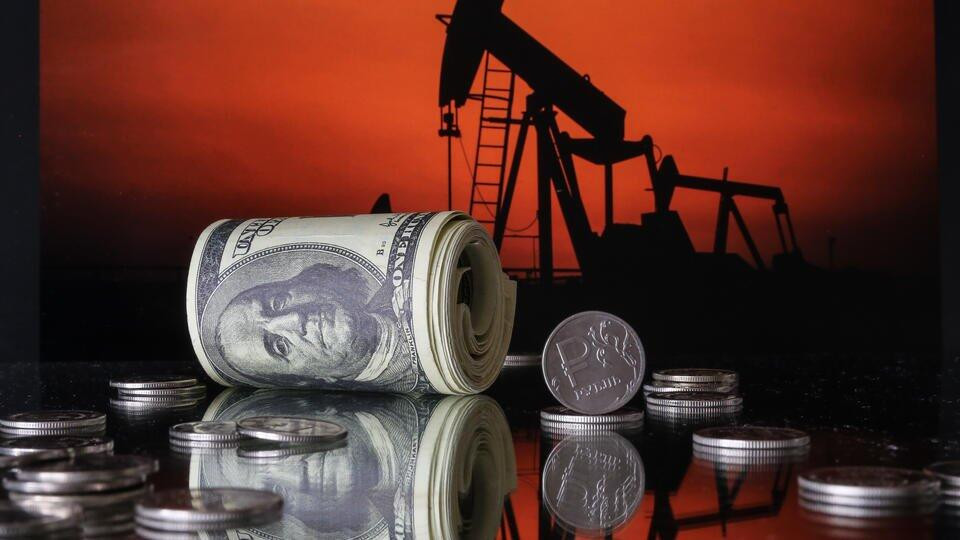
Oil rose in price on Friday, but ended the trading week in the red. The main catalysts for the movement of quotes are two multidirectional forces.
Firstly, there is a high probability of the introduction by Western European countries of a full-scale embargo on Russian oil and the resulting concerns of traders about the supply of oil on the world market. This factor gives a great potential for an increase in oil prices in the light of the ongoing military conflict on the territory of Ukraine.
Secondly, the prices of oil still cannot soar into space yet, since the largest consumer of oil today has serious problems with demand. China is experiencing high inflation and a strong slowdown in economic activity due to a new outbreak of coronavirus and severe restrictions.
So, July futures for Brent crude oil on the London ICE Futures exchange by the time of preparation of the material rose by 2.80% on Friday, to the level of $110.46 per barrel. The price of the June WTI oil futures on the New York Mercantile Exchange rose by 2.90% by this time, reaching $109.21 per barrel. However, since the beginning of the week ended on May 13, Brent benchmark oil has lost 2.7% in price, and WTI oil has lost about 1%.
Currently, the European Union is coordinating the sixth package of sanctions against Russia, which is primarily aimed at the phased introduction of an embargo on the import of Russian oil. In this regard, the International Energy Agency (IEA) reported that the decline in oil supplies from Russia to global shelves in the second half of 2022 will reach 3 million barrels of energy per day.
According to the IEA, Russia's reduction in oil production in April by almost 1 million barrels per day led to a decrease in global supplies by 710,000 barrels, as a result, 98.1 million barrels entered the world market. Given these figures, it is not difficult to conclude that the planned embargo on the supply of Russian oil by the EU countries will definitely completely violate and necessarily shift global trade flows. This will cause a real panic in the market and extreme price volatility.
As for the United States, it is not only high inflation, unprecedented for Americans over the past 40 years, that is putting a lot of pressure on consumers there. The US central bank is more determined than ever to implement a sharp increase in interest rates, because it sees no other ways to restore control over raging inflation. Analysts' comments are increasingly being heard that the tightening of the Fed's policy risks ultimately severely crippling the American economy.
The Fed approved a rate increase of 25 basis points in March and 50 basis points in May. The market is confident that in June the central bank will raise rates by 75 basis points. However, in an interview published on Thursday, Fed Chairman Jerome Powell denied the likelihood of such an impressive rate change in the first summer month. Powell added that a 50 basis point increase in the next two meetings would be the most preferable solution. At the same time, he said that the drawdown of the American economy in the light of the rate hike will happen and it will depend not only on the central bank.
In 2020, due to the coronavirus pandemic, US GDP fell by 3.5%, and in 2021 it could grow by 5.7%. The problem is that inflation is growing just as rapidly, if not even faster. The index of personal consumption expenditures rose by 5.8% in December compared to the same period last year. In March, this inflation indicator increased by 6.6% in annual terms. Both of these indicators indicate the highest rates of inflation since the 1980s. As for the consumer price index and the producer price index, they increased in April by 8.3% and 11%, respectively.
The maximum allowable inflation rate for the US central bank is only 2%. Powell hinted that it is planned to raise the rate seven times this year. In 2023, it is possible that the rate adjustment will continue until the inflation rate returns to the target level of 2%.
The policy promoted by the central bank will bring down considerable difficulties on consumers in the coming months. A couple of days ago, gasoline prices at gas stations in some regions of the United States were able to reach highs of $4.50 per gallon, and diesel prices jumped to above $6. The cost of diesel is the real economy. If its prices are above $6 per gallon, then they reduce part of the companies' profits. It is possible that a large-scale destruction of demand for diesel is coming. For example, there are already noticeably fewer Amazon trucks on the roads. At the same time, credit card costs have increased significantly, which indicates a sharp reduction in cash from consumers.
Everything is also not rosy in China. Due to the coronavirus, the risks of introducing the same long-term hard lockdown in Beijing as in Shanghai are increasing. The world's largest oil-importing country reports depressing demand figures: for the period from January to April, imports of oil to China decreased by 4.8% (compared to the same period last year). However, it is worth admitting that in April alone, this indicator managed to grow by almost 7%.





















